How Chima Mmeje Uses Keyword Clustering To Generate Growth
Topic: Content Marketing
Published:
Written by: Bernard Huang
If you look at Chima Mmeje’s LinkedIn page, it states, “I’m extremely good at one thing. And that’s helping software and tech companies to rank for their target keywords.”
As a Content Writer and Strategist for Zenith Copy and the Senior Content Marketing Manager at Moz, Chima helps brands get the most out of their search engine optimization (SEO) strategy and content efforts so they can rank faster, higher, and for more keywords.
One of the key tools in her kit is keyword clustering, which she’s used to help her clients rank for over a thousand keywords, generate $360k in direct revenue, and drive 585% organic growth.
What is keyword clustering?
Keyword clustering is an SEO content strategy that involves grouping keywords with similar search intent into clusters and using those groups to prioritize and guide your content strategy. In practice, keyword clusters typically have one primary or parent keyword and supporting keywords that are related to the main term.
Chima explains that keyword clustering is about understanding whether people are at the “top, middle, or bottom” of the funnel, noting, “The whole point of keyword clustering is to find all similar keywords with the same intent and then to optimize for all of them.”
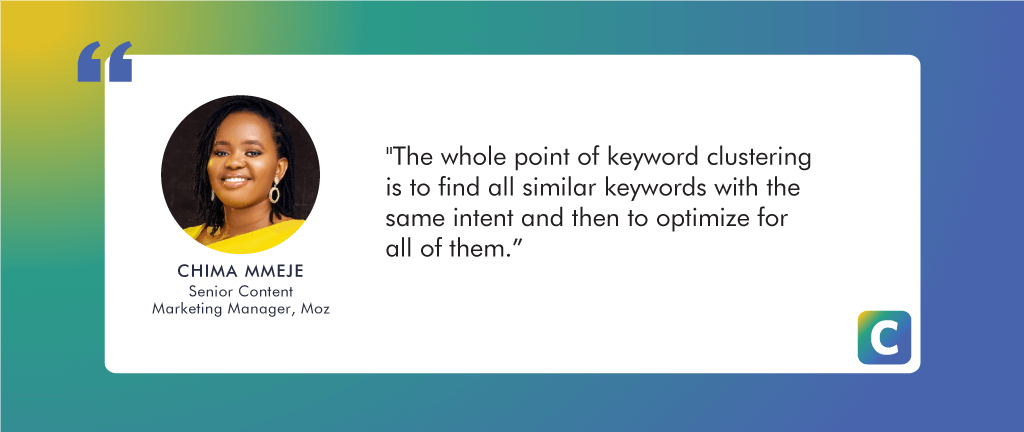
Keyword clustering isn’t about trying to rank for a single keyword. Instead, Chima says the main goal is “spreading our wings to try to rank for as many keywords as possible around the topic.” Then, you can focus on improving your search engine results page (SERP) rankings and driving more traffic by building topical authority, which signals expertise to search engine algorithms.
Keyword clustering example
To better understand how clusters differ from a traditional SEO content approach, we’ll look at an example using a health care brand.
With a traditional strategy, the company focused on ranking highly for a few search terms, such as “health insurance” and “health plan.” Clustering expands on that goal by looking at the entire sales funnel and identifying additional relevant keywords to target.
For instance, one cluster at the top of the funnel might center around the term “health insurance basics” and include the following keywords:
insurance policy basics
health insurance terms
insurance policy terms
health coverage terms
health insurance plan
health plan basics
This cluster serves an informational user intent and would be most relevant for top-of-funnel readers.
In contrast, a cluster centered around “affordable health insurance plans” might include terms like:
best affordable health insurance
affordable healthcare options
affordable healthcare plans
low cost health insurance
low cost healthcare
low cost insurance
By identifying keyword clusters, the company can now rank higher for more terms. But that’s not the only reason to consider this approach.
Benefits of keyword clustering
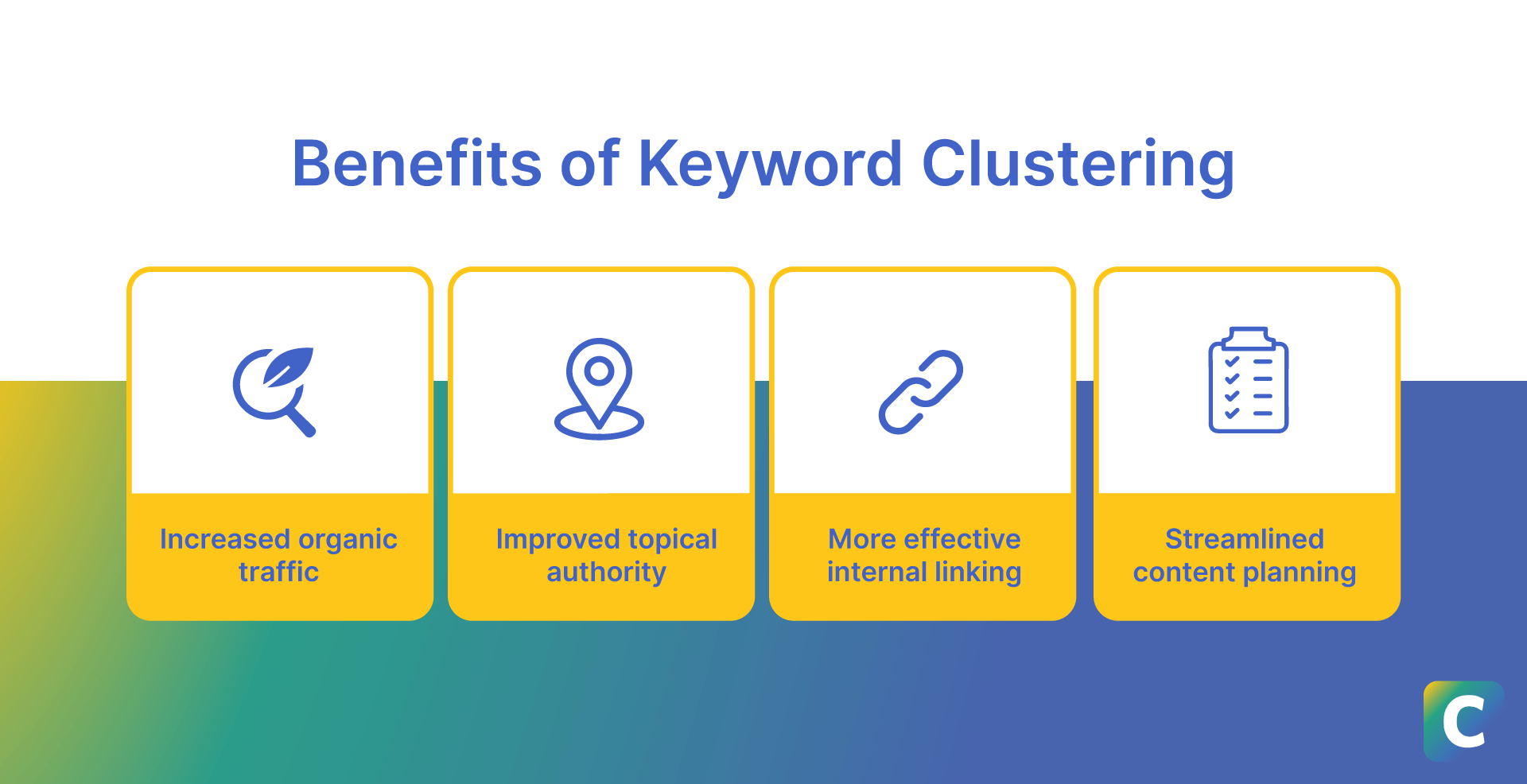
In addition to helping you rank for more keywords, clustering helps you create a more focused SEO strategy driven by search intent and user action. Keyword clusters can help you build authority with search engine algorithms faster and expand your reach to a wider audience.
Here are the specific advantages of keyword clustering Chima mentions.
Increased organic traffic
Strategizing with clusters and targeting a larger number of keywords allows Chima to help her clients consistently rank faster than expected.
“Once we start building the backlinks and we’re putting out that content, within … three, four months, we start seeing results … Within eight months, everything has peaked,” she explains.
For example, Chima’s keyword clustering strategy helped Guru increase organic traffic to their remote work templates by 585%.
Improved topical authority
The clustering process forces you to identify relevant subtopics and create in-depth content to target them. In Chima’s experience, “The more content we created around [a] topic, the more search engine bots would see us as an authority on that content.”
When she began work with Aurelius Lab, the website ranked for a handful of keywords. After she helped them build one keyword cluster around the topic “user research,” the website ranked for over 1,000 keywords within six months, including page one and two rankings for about 10% of the keywords.
More effective internal linking
As Chima explains, “When you write content in a cluster approach, it forces you to cover that topic comprehensively and ensure that every content links to [other] content on the website.”
Taking this approach by covering content comprehensively and effectively linking between related topics enabled Chima to help a finance company generate $360K in direct revenue from keyword clusters.
Streamlined content planning
Chima lists simpler contentprioritization as another benefit of keyword clustering, saying the process “always forced us to think more strategically about the content that we put out there.” By understanding the search intent of each cluster, you can figure out where you may need more content support at each stage of the sales funnel.
With this knowledge, you can design a content calendar that focuses on your goals, such as adding more leads at the top of the funnel or increasing conversions at the bottom. Or, if you have a limited budget, you can prioritize the clusters that will have the most impact on your content goals.
How to do keyword clustering
Determine the topic you want to target.
Create a keyword list.
Divide your keywords into clusters.
Prioritize your content calendar.
Create and optimize content.
1. Determine the topic you want to target
Chima’s first step is identifying your brand’s core topic. She describes it as “The overarching word that [you] want to be known for. For example, when I hear ‘Zapier,’ I think of automation, or when I hear ‘Calendly,’ I think of scheduling.”
Once you establish that, you can move on to doing keyword research.
2. Create a keyword list
Based on your topic, create an Excel or Google Sheets spreadsheet of all related keywords you could potentially target.
Chima encourages brands to think beyond the terms their websites already target. She describes her approach as, “We’re not just doing a broad website-wide keyword research; we're doing a topical keyword research. We want to flesh out as many keywords as possible that relate to that topic.”
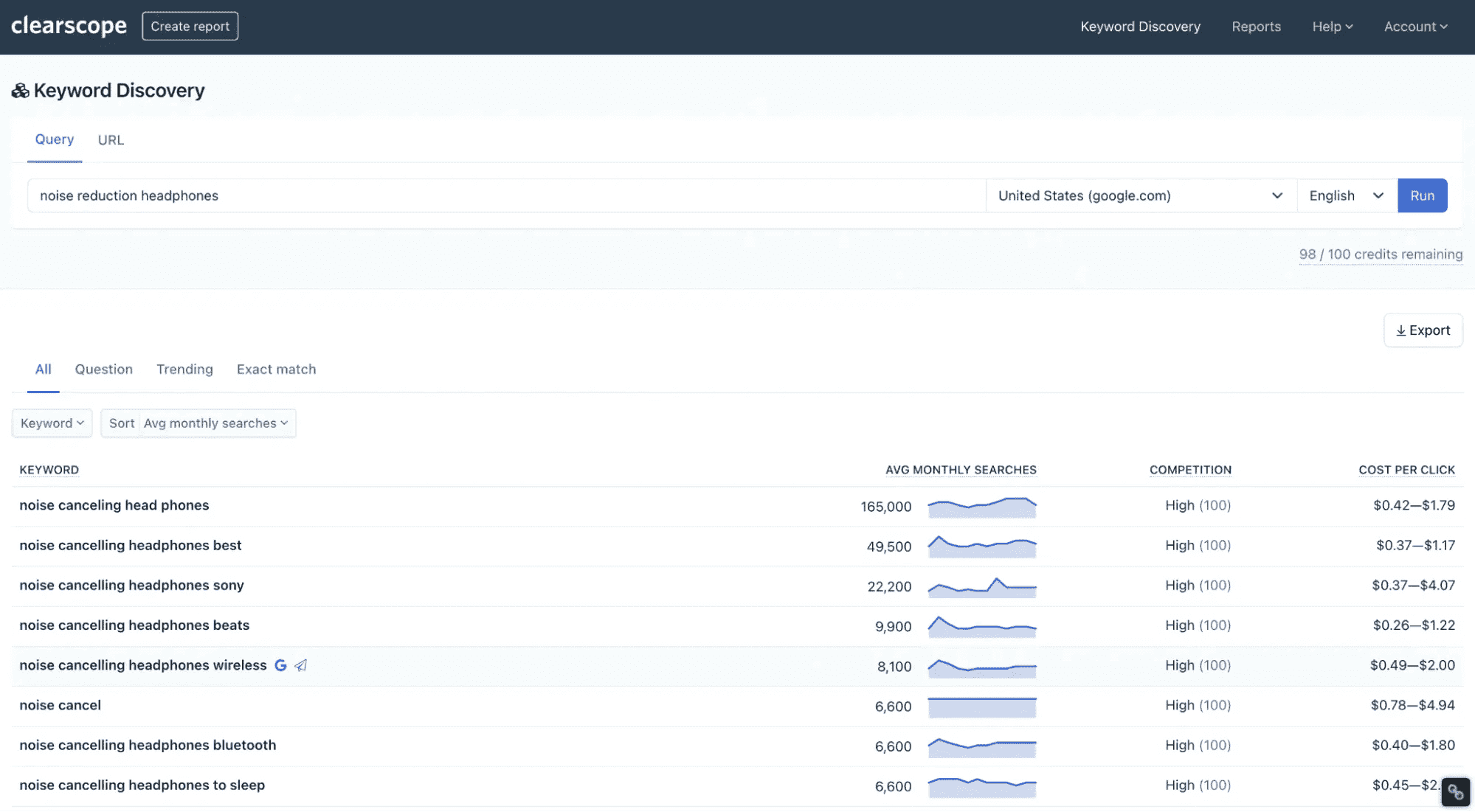
Here are some steps you can take to create a more comprehensive list:
Use tools like Ahrefs or Semrush to look at your competitors’ keywords.
Use Clearscope’s Topic Exploration feature to find related keywords along with search volume, competition score, and cost per click (CPC).
Ask yourself, “What questions would someone have if they were looking up this topic?”
Talk to your sales and customer service teams to find out the questions they hear from leads and customers.
As you add search queries to your spreadsheet, include columns for monthly search volume, keyword difficulty, search intent, and category. You’ll use this information in the next step to create groups.
3. Divide your keywords into groups
Once you have the full list of keywords, create groups of keywords that have similar categories and search intent. These are the possible clusters you can target.
For each group, identify the primary or parent keyword. Your primary keyword should have a balance between popularity (high search volume) and feasibility (realistic keyword difficulty score).

In Chima’s experience, long-tail keywords (three words or more) tend to make good parent terms. She explains, “The smarter approach is always going for those longer-tail keywords with less competition but reasonable search volume that we can rank for.”
After finding the parent keyword, Chima recommends identifying the other relevant keywords for the cluster and optimizing the piece for all of them. The goal here is to add secondary terms that you can cover naturally in your article to make it more comprehensive without keyword stuffing or overloading readers with too much information.
4. Prioritize your content calendar
Once you have your clusters, it’s time to decide which clusters you’re going to target and when.
When Chima works with brands, she likes to ensure there’s full-funnel coverage. “I always try to make sure that there is a balance — maybe like 30% bottom, 30% middle, and maybe the rest top of the funnel keywords,” she says.
From there, schedule each piece based on your brand’s priorities.
If you want to fill a content gap at the bottom of the funnel, start with the clusters that have more commercial intent. Or, if your main goal is to drive more organic traffic, you may choose to target clusters that have the highest combined search volume.
5. Create and optimize your content
Now that you have your keyword clusters and your content calendar, it’s time to create content that ranks for each group. You can use tools like Clearscope to help you draft comprehensive outlines and optimize each piece of content before you publish.
If you want to take your strategy to the next level, here are some pro tips from Chima.
First, start thinking about distribution as you create content. When you do your outline, brainstorm graphic design assets, such as video clips or infographics, that you can use to promote each piece based on its search intent.
Second, take the time to create a high-quality article that gives you a competitive advantage. Chima likes to ask herself, “What is that extra piece of information that we can find to make the article pop? That extra angle that makes this a no-brainer that, yeah, this is better than everything else that exists.”
Best tools for keyword clustering
Now that you know how to go about using keyword clusters to prioritize your content strategy and boost your SEO results, here are some helpful tools to use along the way.
Keyword research tools
Tools like Semrush and Ahrefs are excellent for building out initial keyword lists and helping you identify parent keywords and keyword groups. These two are also useful for analyzing competitor websites and finding keyword gaps, which are terms that other brands rank for and you don’t.
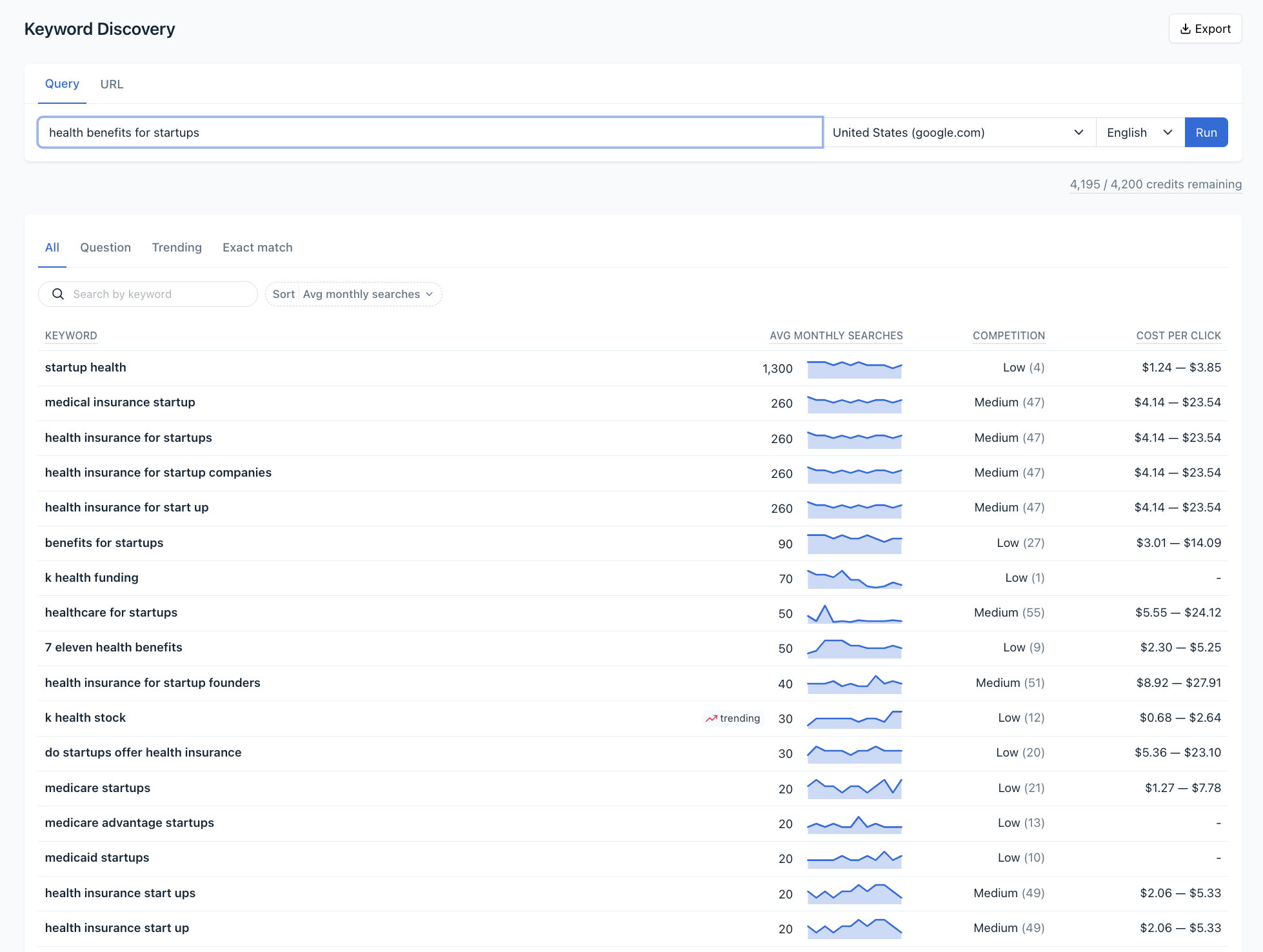
Clearscope also has a Topic Exploration feature that helps you find different keywords that have an audience, have a clear search intent, and can be serviced by a piece of content.
All of these platforms will help you find the monthly search volume and competition level of each of your keywords.
AI chatbots and SEO tools
Artificial intelligence (AI) chatbots like ChatGPT and Google Bard are especially helpful for market research and building out comprehensive content briefs. Chima also likes Perplexity AI, which she uses to “Find on a basic level, on a granular level, what are the issues my [reader] is facing?”
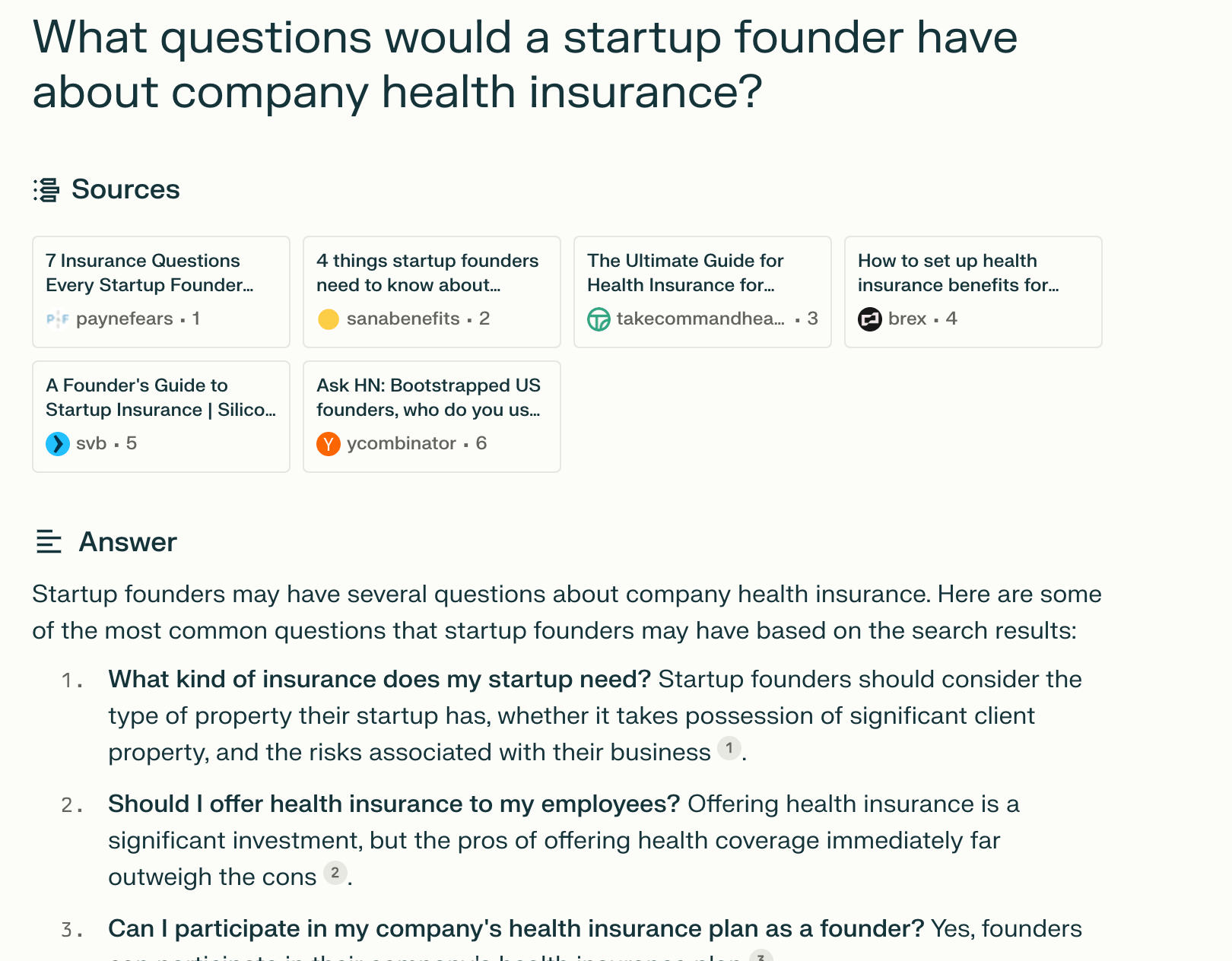
She also recommends trying the Access Links AI extension for ChatGPT, which is a tool that takes your finished drafts and helps you look for content gaps.
Finally, Chima mentions Keyword Insights, an AI platform with a keyword clustering tool you can use to save time as you research and plan content.
“I use Keyword Insights also for clustering when [it’s] a really large data set, and I want something that is going to do that first job of clustering the keywords for me before I start looking at it manually,” she explains.
Content optimization platform
SEO content optimization platforms like Clearscope help you flesh out your briefs and execute your content creation once you’ve already created your keyword clusters. For each target keyword, Clearscope’s Editor gives you a list of related terms, recommended word count, and ideal reading level.
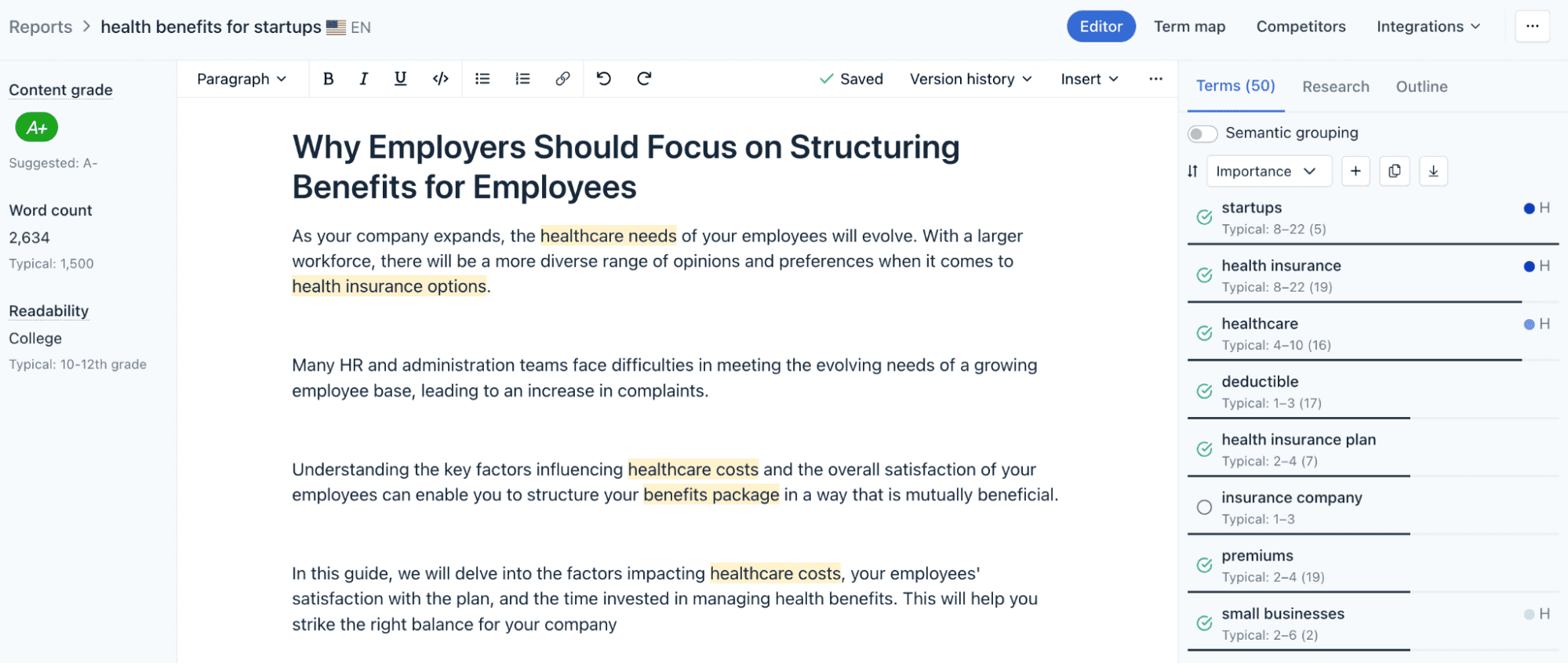
The Editor also includes a research feature where you can find frequently asked questions and a competitors tab that shows you the top-ranked pieces along with their word counts and content grades.
Final thoughts: How Chima Mmeje uses keyword clustering to generate growth
Both SEO and content marketing are strategies that require a long-term commitment to see results. That said, intentional planning can help you achieve better results — and see them faster.
Understanding how keyword clustering works helps you create SEO content priorities and build a more effective strategy. To learn more about tools that can help you optimize your content and streamline your process, explore Clearscope today.
Why Is Keyword Research Important?
Keyword research means finding out what your target audience is already looking for online.
Read moreKeyword Mapping: What It Is and How to Map to Your Purchase Journey
Learn what keyword mapping is and how to implement it for your website.
Read moreContent Optimization Strategy: 20 Tips to Drive Leads and Traffic
Discover how to create a content optimization strategy that drives more organic traffic and generates qualified business leads for your sales funnel.
Read more